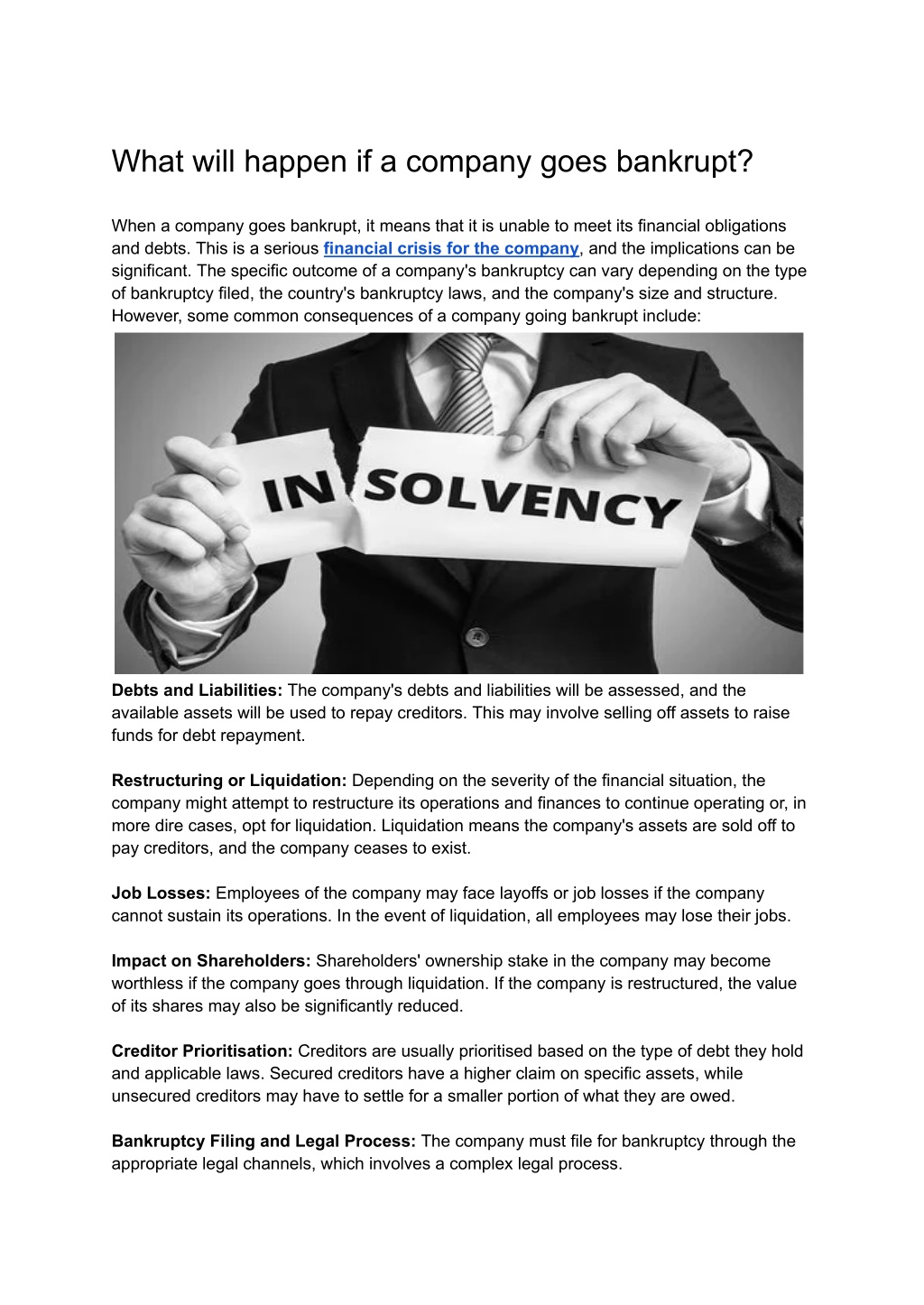If a Company Goes Into Administration, What Happens to Staff Payments and Redundancy? A Guide for Administration Staff
If a Company Goes Into Administration, What Happens to Staff Payments and Redundancy? A Guide for Administration Staff
Blog Article
Business Insolvency Company
7 Preswich Avenue, Leigh, WN7 1RZ
0333 567 1686
Comprehending the Repercussions of Business Liquidation on Employee Retention and Benefits

Influence on Work Safety
In case of company liquidation, the influence on job safety can be significant for staff members as uncertainty concerning future employment emerges. When a company enters into liquidation, workers deal with the overwhelming possibility of possible task loss. This uncertainty can lead to increased stress and stress and anxiety among the workforce, impacting their morale and efficiency.
During the liquidation process, workers may experience a variety of feelings, including rage, stress, and concern, as they face the opportunity of joblessness. The absence of clarity surrounding the timeline of the liquidation and the destiny of their positions can produce a sense of instability within the labor force.
Moreover, workers might additionally be worried concerning the standing of their advantages, such as health care protection, retirement, and paid pause, throughout and after the liquidation process. The prospective loss of these advantages adds an additional layer of complexity to a currently challenging situation for employees.
Changes in Employee Advantages

One typical adjustment is the decrease or elimination of particular benefits to reduce costs and settle superior debts. For example, company contributions to retired life plans may discontinue, leaving workers to take on the full responsibility of saving for their future. Moreover, medical care benefits might be scaled back, leading to greater out-of-pocket costs for medical solutions.
Interaction becomes critical throughout this duration of shift. Employers have to be clear about the changes, supplying clear descriptions and help to help workers browse check my reference with the alterations. Open discussion and support can help alleviate anxiousness and uncertainty among the labor force, cultivating a more favorable transition experience in spite of the tough conditions.
Retention Methods Post-Liquidation
Complying with the company liquidation, implementing effective retention techniques is vital to guarding organizational skill and preserving security within the labor force. In times of unpredictability, staff members might really feel distressed concerning their future work security and be extra likely to look for different employment possibility. To alleviate this threat, business ought to focus on open communication, offering transparency regarding the firm's situation, and offering assistance to staff members throughout the transition duration.
One key retention approach post-liquidation is to prioritize staff member well-being and spirits. This can be accomplished through regular check-ins, counseling solutions, and creating a positive workplace. Additionally, offering career development opportunities and upskilling programs can increase staff member inspiration and involvement during challenging times. Identifying and compensating workers for their loyalty and dedication can additionally promote a feeling of loyalty and commitment to the company.
Furthermore, establishing a clear career progression course and establishing realistic objectives can provide staff members a sense of instructions and purpose within the firm (if a company goes into administration do i have to pay them). By purchasing staff member growth and actively including them in blog here decision-making procedures, organizations can enhance staff member retention rates and develop a resistant labor force post-liquidation
Legal Rights and Securities
Throughout the after-effects of firm liquidation, it is crucial to deal with the legal civil liberties and securities readily available to workers to make certain a certified and reasonable procedure. Staff members facing task loss because of liquidation have details rights secured by work regulations. These civil liberties include entitlements to unsettled salaries, discontinuance wage if relevant, and accrued getaway or ill leave payouts. If needed to navigate the intricacies of the liquidation procedure., it is crucial for employees to comprehend these legal rights and seek legal suggestions.
In addition, in cases where a business goes into liquidation, employees are frequently taken into consideration preferential financial institutions, giving them higher concern in obtaining exceptional settlements over other financial institutions. Understanding these lawful civil liberties and defenses is essential for staff members to safeguard their interests and seek suitable choice in the event of company liquidation - what happens to staff when a company goes into liquidation.
Dealing With Financial Uncertainty
Browsing monetary uncertainty can be a complicated obstacle for staff members affected by company liquidation. Throughout such times, it is vital for employees to examine their current financial situation realistically.
Looking for monetary therapy or guidance from experts can provide useful understandings into managing financial debts, reorganizing financial obligations, and intending click now for the future. It is vital for employees to stay informed concerning their entitlements, such as severance bundles or outstanding settlements, to ensure they get what they are owed. Additionally, considering alternative employment choices or job opportunities can help bridge monetary spaces during this transitional period. By proactively attending to economic difficulties, staff members can browse through the uncertainty triggered by company liquidation with greater durability and readiness.
Verdict
In final thought, firm liquidation can have considerable effects on employee task protection, benefits, and general wellness. Understanding legal civil liberties and defenses can assist reduce the influence of liquidation on workers.
When a company faces liquidation, the destiny of its workers hangs in the equilibrium, raising important concerns concerning task protection, benefits, and long-lasting stability. The influence of company liquidation on employee retention and advantages is a diverse problem that demands a closer assessment to comprehend the full scope of its repercussions.
Browsing monetary unpredictability can be a daunting challenge for workers affected by business liquidation. By proactively resolving financial challenges, employees can browse through the uncertainty created by company liquidation with greater resilience and preparedness.

Report this page